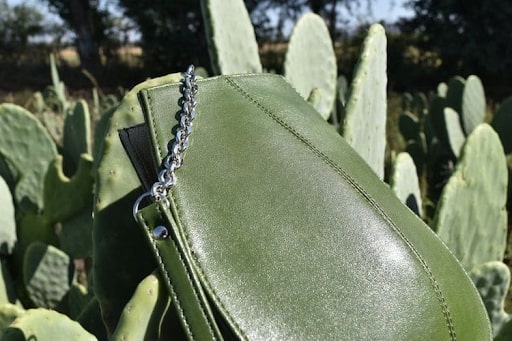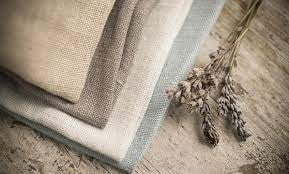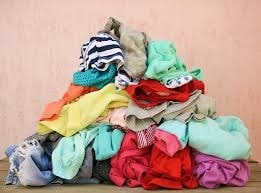Sustainable fabric refers to fabrics that are derived from eco-friendly resources and in an ethically responsible way. They are made from either natural or recycled materials. These sustainable fabrics also contribute to reducing the amount of waste debris, help in water conservation, soil regeneration and lowering carbon emissions. These fabrics cause less or no damage to the environment or the society from it being a raw material throughout the processing and turning into a fabric.
Sustainable fabric is the need of the hour, why?
With fast fashion at its peak, manufacturers are producing more and more textiles that are not eco-friendly in nature. Due to this high accelerated demand, the fabrics and materials used are not natural and are not obtained in an organic manner and thus causing a lot of damage to the environment. Materials like polyester, nylon, rayon, acrylic and many more are non-biodegradable fibers making them impossible to decompose making it a threat to the environment.
Whereas, the sustainable fabric is not only good for the environment but also good for society. Using this fabric will be good for your health as they are naturally made and have no chemicals in them, this will prevent the risk of any allergies, rashes or redness on the skin.
Sustainable fabrics are not only easy to maintain but they also save water, animals and soil! By using this material you can do your future self a favour as they save natural resources, lower the carbon footprint, support labour rights and bring positive change in us!
A few unique sustainable fabric options are mentioned below:
Eco-friendly Leather
Leather has always been a questionable investment - the impact this material has on animals, the environment and workers is too much. But that was before alternatives to this material were found! Pinatex is one the common leather alternatives, this is made from pineapple leaf fibres. Not only is it a natural and sustainable material—it also supports local farming communities by providing extra income from something that was previously being discarded as waste! Other alternatives for leather are cactus, recycled rubber, mushroom, coconut and apple.

Fur
Seaweed has been known for its health benefits, but it also can be made into a fabric? Seaweed fabric is made by using algae from the sea. Seaweed fabric is not only eco-friendly but also 100% biodegradable. This fabric is breathable, light and carbon neutral. The breathable characteristics make fabric made with seaweed suitable for active wear, and it blends well with other fibers.
Wool
Wool can be a sustainable fabric. But it highly depends on how it is produced. It's not as simple as shearing happy sheep—the reality is a complex supply chain that presents a host of animal welfare and environmental concerns. Sustainable alternatives for wool are coconut husks, bamboo, soybean fiber, hemp and recycled wool.
Silk
Silk is one of the oldest and most valuable fabrics in the world. Silk is a natural and biodegradable fiber, but its production has a larger environmental impact than other natural fabrics. According to the Sustainable Apparel Coalition's Higg Index, silk has a worse environmental impact than synthetic fabrics, too. First, silk production takes a lot of energy. Second, silk production uses a lot of water. Therefore the need for a sustainable alternative here is extremely necessary. Stems of the lotus flower or banana can be made into luxurious, silk-like fabric. Another alternative is piña, a fabric made from the leaves of pineapples. Piña has a silk-like texture and is lightweight, translucent, and stiff.
Linen
Linen is made from flax plant, which is generally grown without any use of fertiliser. Flax plants have many uses like seed, oil and crop so nothing goes to waste during harvesting. This natural material is also biodegradable and versatile in nature. This stylish fabric is also extremely durable!

Bamboo
Bamboo is the fastest growing crop and is naturally organic. The bamboo fabric is becoming more and more popular these days as it is softer than cotton and the texture is more like silk. This fabric also absorbs moisture making it an eligible summer wear cloth. Bamboo is usually a very sustainably grown crop, however you need to make sure you are not buying bamboo rayon, the most common type of bamboo fabric on the market. Bamboo rayon requires intensive chemicals during the manufacturing of the fibres, 50% of which may well end up being released into the local environments.
Reclaimed fabric
Reclaimed fabric is leftover fabric from the manufacturers. It also means any unused fabric purchased second hand which would otherwise be thrown away. Reclaimed fabric is also known as deadstock. By using this deadstock, one prevents it from going to waste in the landfills and makes use out of it instead.

Denim
Denim is not only harmful to the environment but it is also problematic for workers. Natural indigo dye has its benefits but it is also an expensive and labour intensive crop. Farming it to meet current denim demands would be devastating to the environment. However, synthetic dyes aren’t much better. One of the sustainable alternatives is hemp and organic cotton.

Many fabrics that make it into our home harm the environment or animals (oftentimes both). Not to mention, they release harmful chemicals and microplastics into our environment for hundreds of years.
By filling your wardrobes with many of the eco-friendly fabrics here, you can make a stand for a better world and spread awareness by choosing sustainable options.
Spread the word on sustainable fabrics and let us know if you like this blog!
Read More
Zero Waste Lifestyle Tips – Recycling / DIY Hacks
Let’s Go Green This Holi – Celebrate Eco-Friendly Holi With Us
We Know That Planting Trees is Good For The Planet — But Why Is It Necessary?






